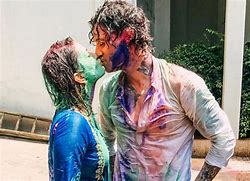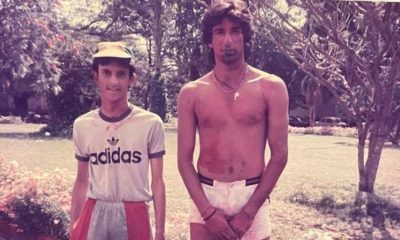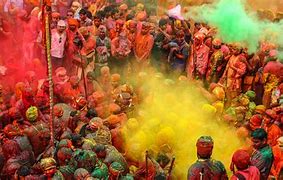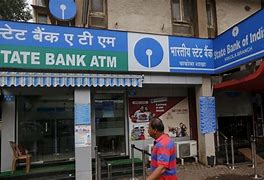Feature
HOLI 2019! Choose wisely – go organic this Holi
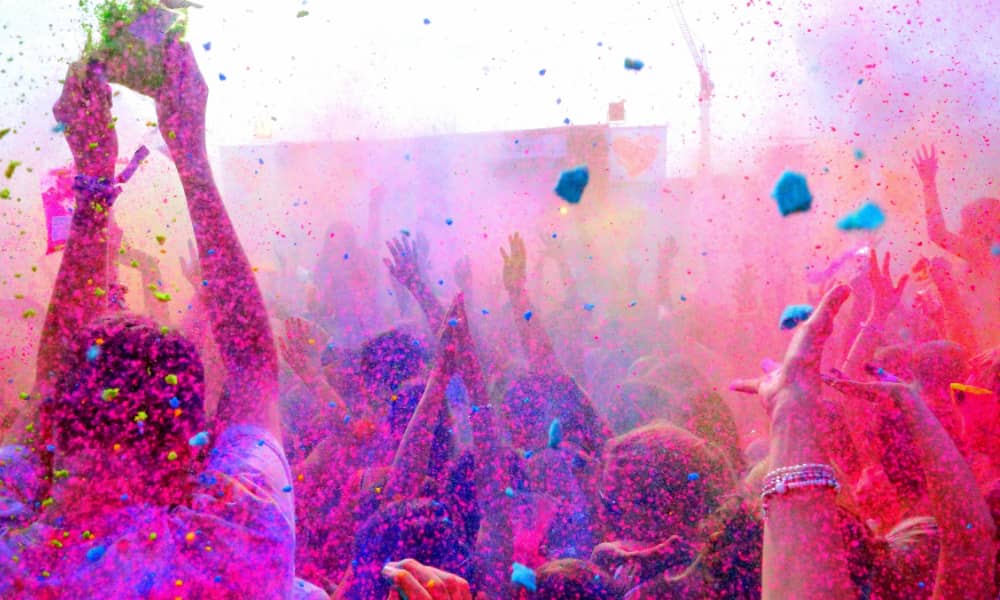
With Holi -the festival of colours coming up — everyone is busy buying colours, ‘pichkaris’, and balloons but with increasing environment pollution and severe allergic reactions to synthetic colours, there is a growing awareness among people to opt for organic variants.
“In an approximately Rs 4,500-crore unorganised Holi colour market, the share of the organic variety is miniscule, but growing,” said Madhumita Puri, Founder and Executive Director of Avacayam Naturals, a Delhi-based manufacturer of organic colours.
The adverse effects of synthetic colours was observed in a study titled ‘The Holi Dermatoses’, published in the Indian Journal of Dermatology.

It found a spate in skin diseases following the spring festival in India.
In the study conducted on 42 patients in Kolkata, 11 patients suffered due to activities related to preparation of colors and 12 reported aggravation of pre-existing dermatoses.
Nearly 60 per cent patients reported itching, while others reported to have suffered from a burning sensation, scaling, redness and watering of the eyes, as per the study.
Treading on a eco-friendly and skin-friendly path, Avacayam Naturals employed differently-abled persons to make organic colours by using waste and used flowers and leaves.
This solves three purposes at one go – generates employment for the disabled, manufactures harmless eco-friendly colours, and there is optimal usage of waste flowers.
Speaking to IANS, Puri said: “For making the colours, we collect used flowers — roses, marigolds, and others — and leaves from temples, weddings, and hotels.”
Avacayam Naturals, one of the programs that Puri started under her “Trash to Cash” scheme, makes four colours: Pink from roses, yellow from yellow marigolds, orange from orange marigolds, and green from leaves.
On being asked if the colours are harmless, she said: “Rather than damaging the environment, they are beneficial as each packet of colour is made from waste flowers which otherwise would dirty the place.”
How are the colours made?

“After the flowers are collected, the workers sort them in different baskets according to their colour. Then, the petals and seed pods are separated and cut. These are then spread out to dry in a well ventilated space for all the moisture to evaporate.
“After that, they are ground and processed — without adding any chemicals — to be made into colours for people to enjoy,” Puri said, adding that the process of collection, drying, and grinding continues throughout the year but it is only before festivals that they process them into the final product.
“In a year, we manufacture around 20 tonne of pure organic colour, some of which is sold to Walmart India. One kilo of colour is sold between Rs 600 and Rs 1,000.”
When asked about the expiry date of these colours, Puri said: “The product is a dry one and completely natural. We have been testing them since five years now and have not found any deterioration in the quality, fungal infestations, or weevils. So there is no ‘expiry date’ to them.”
Another such manufacturer is Jaipur-based Red Earth which makes colours “exclusively from edible materials and scent them with pure, traditional attars”.
Speaking to IANS, Himanshu Verma, Director-Owner of Red Earth, said: “Every 2-3 years, we change our colour palette… this year we have four colours — Sunahra Dhamaal, Shvet Abeer, Neem Sanrachna, and Gulabi Nagariya — that are inspired by local materials.”
“The colours are curated on the basis of availability of local materials. We use items like camphor, neem, mehendi, multani-mitti, geru powder, arrowroot, flour, and others,” Verma said, adding that 50-60 per cent materials used are edible so that even if someone ingests them by mistake, they will not be as harmful.
Entertainment
Meghalaya Reserves Legalized Gambling and Sports Betting for Tourists

The State Scores Extra High on Gaming-Friendly Industry Index
Meghalaya scored 92.85 out of 100 possible points in a Gaming Industry Index and proved to be India’s most gaming-friendly state following its recent profound legislation changes over the field allowing land-based and online gaming, including games of chance, under a licensing regime.
The index by the UK India Business Council (UKIBC) uses a scale of 0 to 100 to measure the level of legalisation on gambling and betting achieved by a state based on the scores over a set of seven different games – lottery, horse racing, betting on sports, poker, rummy, casino and fantasy sports
Starting from February last year, Meghalaya became the third state in India’s northeast to legalise gambling and betting after Sikkim and Nagaland. After consultations with the UKIBC, the state proceeded with the adoption of the Meghalaya Regulation of Gaming Act, 2021 and the nullification of the Meghalaya Prevention of Gambling Act, 1970. Subsequently in December, the Meghalaya Regulation of Gaming Rules, 2021 were notified and came into force.
All for the Tourists
The move to legalise and license various forms of offline and online betting and gambling in Meghalaya is aimed at boosting tourism and creating jobs, and altogether raising taxation revenues for the northeastern state. At the same time, the opportunities to bet and gamble legally will be reserved only for tourists and visitors.
“We came out with a Gaming Act and subsequently framed the Regulation of Gaming Rules, 2021. The government will accordingly issue licenses to operate games of skill and chance, both online and offline,” said James P. K. Sangma, Meghalaya State Law and Taxation Minister speaking in the capital city of Shillong. “But the legalized gambling and gaming will only be for tourists and not residents of Meghalaya,” he continued.
To be allowed to play, tourists and people visiting the state for work or business purposes will have to prove their non-resident status by presenting appropriate documents, in a process similar to a bank KYC (Know Your Customer) procedure.
Meghalaya Reaches Out to a Vast Market
With 140 millions of people in India estimated to bet regularly on sports, and a total of 370 million desi bettors around prominent sporting events, as per data from one of the latest reports by Esse N Videri, Meghalaya is set to reach out and take a piece of a vast market.
Estimates on the financial value of India’s sports betting market, combined across all types of offline channels and online sports and cricket predictions and betting platforms, speak about amounts between $130 and $150 billion (roughly between ₹9.7 and ₹11.5 lakh crore).
Andhra Pradesh, Telangana and Delhi are shown to deliver the highest number of bettors and Meghalaya can count on substantial tourists flow from their betting circles. The sports betting communities of Karnataka, Maharashtra, Uttar Pradesh and Haryana are also not to be underestimated.
Among the sports, cricket is most popular, registering 68 percent of the total bet count analyzed by Esse N Videri. Football takes second position with 11 percent of the bets, followed by betting on FIFA at 7 percent and on eCricket at 5 percent. The last position in the Top 5 of popular sports for betting in India is taken by tennis with 3 percent of the bet count.
Local Citizens will Still have Their Teer Betting
Meghalaya residents will still be permitted to participate in teer betting over arrow-shooting results. Teer is a traditional method of gambling, somewhat similar to a lottery draw, and held under the rules of the Meghalaya Regulation of the Game of Arrow Shooting and the Sale of Teer Tickets Act, 2018.
Teer includes bettors wagering on the number of arrows that reach the target which is placed about 50 meters away from a team of 20 archers positioned in a semicircle.
The archers shoot volleys of arrows at the target for ten minutes, and players place their bets choosing a number between 0 and 99 trying to guess the last two digits of the number of arrows that successfully pierce the target.
If, for example, the number of hits is 256, anyone who has bet on 56 wins an amount eight times bigger than their wager.


